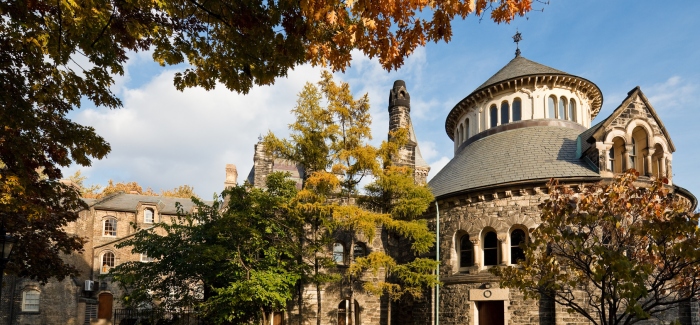If you want to study in Japan, there are two top Japanese universities that are likely to be top of your list: the University of Tokyo and Kyoto University, both of which are featured in the global top 40 of the QS World University Rankings® 2018. The University of Tokyo takes the lead at joint 28th, up six places from last year’s ranking, while Kyoto University is joint 36th (up one place).
But if you’re trying to decide between these two top Japanese universities, you’ll want to look beyond rankings and compare the institutions on other factors. Read on for an overview of how the University of Tokyo and Kyoto University compare.
|
|
University of Tokyo |
Kyoto University |
|
QS World University Rankings® 2018 |
Ranked joint 28th in the world Ranked 7th in the world by academics and 14th by employers 68th for faculty/student ratio Ranked 97th for research impact (citations per faculty member) Ranked 401+ both for percentage of international students and international faculty members |
Ranked joint 36th in the world Ranked 18th in the world by academics and 47th by employers
Ranked 185th for research impact (citations per faculty member)
|
|
Subject strengths* |
Ranked 11th in the world for arts & humanities 11th for engineering & technology 22nd for life sciences & medicine 9th for natural sciences 10th for social sciences & management |
Ranked joint 26th in the world for arts & humanities 22nd for engineering & technology
46th for social sciences & management |
|
Location |
The main Hongo Campus is in the Bunkyō area of central Tokyo. |
Made up of three campuses in Kyoto: Yoshida, Uji, and Katsura. Yoshida is the main campus. |
|
Student community |
28,253 students were enrolled as of May 2017: 14,002 undergraduates 14,251 graduate and professional students 3,472 (12.2%) of these are international |
22,862 students were enrolled as of May 2016, 2,091 (9.1%) of these were international |
|
International undergraduate & graduate tuition fees |
¥535,800 (~US$4,900), plus admission and examination fees. |
¥535,800 (~US$4,900), plus admission and examination fees. |
|
English-taught courses |
Mostly available at graduate level (list here) but offers PEAK and GSC English-taught undergraduate courses here. |
Offers an undergraduate engineering degree taught in English, and several English-taught master’s degrees (list here) |
*Based on the broad subject areas of the QS World University Rankings by Subject 2017.
QS World University Rankings® 2018
The University of Tokyo takes the lead in the QS World University Rankings at joint 28th in the world, with the University of Kyoto just eight spots behind at joint 36th. Looking at the indicators used to compile the rankings, both universities receive their strongest positions for their reputation among academics, with Tokyo the seventh best university in the world for this. Tokyo also beats Kyoto for its reputation among graduate employers, ranking 14th in the world while Kyoto is 47th. It also has a wider lead for its research impact, ranking 97th while Kyoto is 185th.
However, Kyoto University achieves a slightly higher score than the University of Tokyo for its faculty/student ratio, suggesting students there benefit from smaller classes and more one-on-one time with tutors.
Both universities receive their lowest scores for the proportion of international faculty members and international students, each receiving scores of 401+ for both indicators, showing both universities still have work to do to make their campuses more diverse.
Subject strengths
For those still trying to decide between these two top Japanese universities, the QS World University Rankings by Subject can be a useful tool for showing you which university excels in your chosen discipline. Looking at the broad subject areas of the ranking, both the University of Tokyo and Kyoto University receive their strongest scores for natural sciences, with Tokyo featured in the top 10 at ninth, and Kyoto not far behind at 15th, showing there’s very little difference between the two institutions if you’re studying a natural sciences degree. The University of Tokyo is ranked higher than Kyoto University for all of the broad subject areas, and also features in the global top 10 for social sciences and management.
The table below shows how Tokyo and Kyoto compare for all of the 46 subjects covered by the ranking.
|
The University of Tokyo and Kyoto University in the QS World University Rankings by Subject 2017 |
||
|
|
University of Tokyo |
Kyoto University |
|
Accounting & finance |
44th |
-- |
|
Agriculture & forestry |
12th |
28th |
|
Anatomy & physiology |
9th |
30th |
|
Anthropology |
17th |
40th |
|
Archaeology |
31st |
-- |
|
Architecture |
17th |
=37th |
|
Biological sciences |
12th |
15th |
|
Business & management |
51-100 |
101-150 |
|
Chemistry |
10th |
15th |
|
Communication & media studies |
26th |
101-150 |
|
Computer science & information systems |
18th |
51-100 |
|
Development studies |
24th |
-- |
|
Earth & marine sciences |
15th |
39th |
|
Economics |
=30th |
51-100 |
|
Education & training |
51-100 |
151-200 |
|
Engineering (chemical) |
10th |
6th |
|
Engineering (civil) |
12th |
18th |
|
Engineering (electrical) |
13th |
51-100 |
|
Engineering (mechanical) |
8th |
22nd |
|
English language & literature |
=37th |
-- |
|
Environmental sciences |
25th |
46th |
|
Geography |
=19th |
51-100 |
|
History |
20th |
33rd |
|
Law |
=22nd |
=50th |
|
Linguistics |
18th |
51-100 |
|
Materials science |
15th |
25th |
|
Mathematics |
18th |
30th |
|
Medicine |
26th |
51-100 |
|
Modern languages |
6th |
14th |
|
Nursing |
51-100 |
-- |
|
Performing arts |
=38th |
-- |
|
Pharmacy |
9th |
25th |
|
Philosophy |
51-100 |
51-100 |
|
Physics & astronomy |
9th |
=16th |
|
Politics |
=17th |
51-100 |
|
Psychology |
51-100 |
151-200 |
|
Social policy & administration |
9th |
50th |
|
Sociology |
22nd |
51-100 |
|
Sports-related subjects |
-- |
33rd |
|
Statistics |
19th |
-- |
|
Veterinary science |
=34th |
-- |
Location
Another factor worth considering is the respective location of each of these top Japanese universities, with both based in large cities. The University of Tokyo’s main campus (Hongo Campus) is located in the Bunkyō area of central Tokyo, and is historic, having been the Kaga Domain’s official residence during the Edo period. Some relics of this history are still found on campus, such as the famous Red Gate (Akamon) and the beautiful Sanshiro Pond, which dates back to 1615.
Tokyo was ranked seventh in the latest QS Best Student Cities ranking, receiving the highest score in the world for Employer Activity, showing that graduates of the city are highly sought after by employers. It also received a strong score for Desirability (third in the world), as it’s a safe and clean city with desirable features for international students. Tokyo is huge, with the most populous wider metropolitan area in the world – home to around 38 million people in all.
Meanwhile, Kyoto University is made up of three campuses, the largest of which is Yoshida, which is noted for its various architectural styles, including buildings dating back to the university’s founding (1897) such as the iconic Clock Tower. The university’s Uji Campus, formerly owned by the Imperial Japanese Army, is home to a number of research institutes and lies in a tranquil setting in suburban Kyoto. Its third campus, Katsura, is made up of four clusters and was conceived as a ‘Techno-science Hill’ to explore new ideas in technology and science.
The city of Kyoto, small in comparison to Tokyo with around 1.5 million people, is ranked 17th in the latest Best Student Cities index along with the nearby cities of Osaka and Kobe, with the combined metropolitan area known as Keihanshin. Kyoto was the Imperial Capital of Japan for a thousand years and has a whopping 17 UNESCO World Heritage Sites. While Tokyo offers students the chance to live in a bustling metropolis, the large number of temples and shrines in Kyoto help give the city a more natural feel. Kyoto-Osaka-Kobe received its highest score for the Student View category in the Best Student Cities index (appearing in the top 10 of this new indicator), proving students who live there really enjoy doing so. If you’d prefer to study in a smaller city than Tokyo, Kyoto may be preferable (especially if you’re a history fan).
Student community
Both of these two top universities in Japan are quite large, with the University of Tokyo slightly larger (28,253 students are enrolled, with a fairly even split between undergraduates and postgraduates). The University of Tokyo also has a larger number of international students, with 3,472 (12.2%), while Kyoto University had 2,091 international students enrolled in May 2016, around 9% of its total enrollment, with most of these students hailing from other countries in Asia, such as China, South Korea and Taiwan.
Tuition fees
Undergraduate and graduate (master’s/professional) tuition fees are the same for all students at both the University of Tokyo and Kyoto University, ¥535,800 (~US$4,900) per year. Students will also need to pay extra fees for admission and examinations, which are also the same for both institutions – the matriculation fee is ¥282,000 (~US$2,560) and the entrance examination fee is ¥17,000 (~US$155). Matriculation fees must be paid when students register.
The Law Schools of both the University of Tokyo and Kyoto University charge higher tuition fees, with both universities charging ¥804,000 (~US$7,300) per year. The registration fee for law students is the same, but like all graduate students, they pay higher examination fees (¥30,000 (~US$270)).
Students studying a PhD in medicine or veterinary science at the University of Tokyo pay ¥520,800 (~US$4,735) a year, plus the admission fee and ¥30,000 examination fee.
All students pay their tuition fees in two instalments, in April for the first semester and October for the second semester.
Funding
Both of these top universities in Japan offer funding to help students afford their education, including:
Tuition fee exemptions
Both universities offer the opportunity for outstanding undergraduate students who are facing economic hardship to have an exemption of all or half of their tuition fees (Tokyo also offers this to graduate students). Students may also be eligible for exemptions if circumstances arise beyond their control which mean they can no longer pay their tuition fees. More information on exemptions at Kyoto University can be found here.
Scholarships
The University of Tokyo offers a Special Scholarship for International Students, an award for high-achieving international postgraduate students, in the form of a monthly stipend of up to ¥200,000 (~US$1,800). Students are also eligible for Japanese Government Scholarships, which award a monthly stipend of up to ¥145,000 (~US$1,300) depending on your level of study.
Kyoto University annually nominates approximately 60 private scholarship programs, with each scholarship offering between ¥30,000 and ¥180,000 (~US$270 – 1,640) a month to one or two students. Some of these will require students to have a good knowledge of Japanese.
You can browse other scholarships to study in Japan here.
Which of these top universities in Japan would you choose? Let us know in the comments below.












